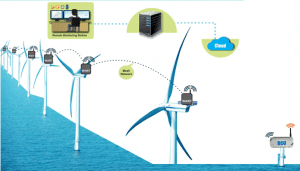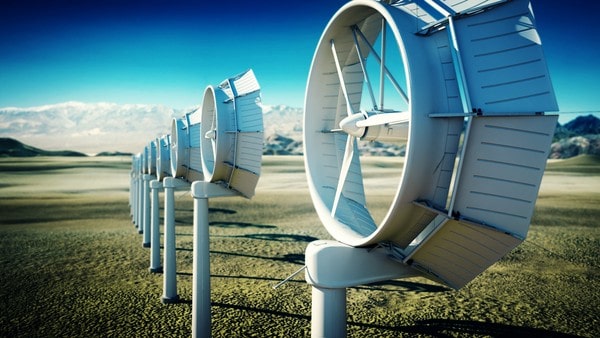
Devavrat Kulkarni is a Senior Business Analyst at Maven Systems Pvt. Ltd. This article is a part of the smart cities initiative and innovations than could be the next-level advancements in the renewable energy sector
Why do we need a smart solution?
Renewable energy sources are being tapped throughout the world, and India is adopting it with zeal. Being the first country to have set up a non-conventional energy ministry, the coming few years is going to see not only see favorable policies, and maturing technologies, but also a lot of investments. Solar energy while still small in presence is in the process of catching up and wind energy currently produces almost 1.6% of the country’s total energy requirement.

Wind energy currently produces almost 22,000 MW of energy in India, with the largest deployment in the state of Tamil Nadu. These farms see huge windmills in remote locations either on shore or off shore. The land beneath the windmills varies from plateaus to hillocks, and barren to dense vegetation. Needless to say additional wiring for the windmills is expensive, labor-intensive and has recurring maintenance cost. Monitoring windmills using wired solutions is counter-productive.
Solar energy produces around 3,000 MW of energy in India, and is set to increase in the coming years. At present almost 35 square kilometers are reserved in the Thar Desert for setting up a solar farm. The final vision is to produce 20,000 MW of grid based and 2,000 MW of off-grid electricity by the means of solar panels. Solar panels are, for obvious reasons installed in deserts over a large area. Monitoring them requires a dedicated staff, in hostile conditions. The cost of a wired solution would once again be much larger than what could be considered feasible.
It is for these reasons that smart, wireless remote monitoring solutions are required for renewable energy farms.
Features of a smart solution
These features will constitute of a smart solution that will be able to monitor a renewable energy farm with the least amount of hassle:
Remote monitoring: The solution in case, should give remote monitoring capabilities. The entire farm must be monitored from a different location using a simple cloud based application. The detailing should go down till the level of every individual windmill, and solar panel.
Wireless: As mentioned earlier, the locations of both wind farms and solar farms are hostile. The solution should be a completely wireless solution. No additional wires, other than the ones strictly needed, should have to be laid down for monitoring purposes. However the solution must have a long reach so that a single data collection unit can be used for an entire farm.
Alerts and events: The solution must be able to alert the supervisor regarding events like tamper, lower than normal energy production and malfunction. The solution must also give the feature to be able to set maintenance alert events. These notifications should go in the form of email or SMS to the supervisor. All these events should be sent in real time.
Energy parameters: The solution should be able to collect the energy and performance parameters of the windmills and the solar panels. As these machines are used to produce electricity, the solution must be able to not only find out the exact amount produced, but also report it.
High durability: As renewable energy farms are usually in sparsely populated or environmentally harsh circumstances, the solution itself must have high durability. The solution should not lose its effectivity in conditions like high wind, rain, direct sunlight, or dust.
Minimum maintenance: The solution should have minimum, possibly no, maintenance cost. Renewable energy farms have high installation cost, and their break-even period is as large as ten years. In such a case, a solution that requires regular maintenance is not preferable.
A smart solution
A smart, remote monitoring solution for renewable energy farms would include making use of long reach wireless technology that forms a mesh network. A mesh network is a robust, self-healing, self-forming network that will help fetch the data of the machines. A single Data Concentrator Unit (DCU) can be used to collect the data and upload it to the cloud application. A single DCU collecting the data from up to 500 windmills / solar panels can be considered as a cost effective solution. This cloud application can then be used to access the data from remote location, preferably the air conditioned office of the supervisor.
Wind farms
In case of wind farms, two adjacent windmills are placed up to 25 meters apart. In such a case the long reach becomes an important factor. Also as the space between windmills can be used for construction of a variety of structures, the wireless medium must have high penetration power. Each windmill will have an individual energy meter that will be used to find the amount of electricity produced, and then transmitted over the mesh.

Solar farms
Solar farms consist of multiple solar panels spread out over a large area. The current technology allows these panels to work at a 20% efficiency rate. Dust, and pollen on the panel, reduces the efficiency by another 30%. As a result the solution in this case would have to keep a close track of the electricity being produced by each panel, and report it back to the supervisor. If any panel is showing less than normal energy production then an alarm should be raised, without the supervisor having to check the data. Also the alarm should pinpoint which exact panel is producing less energy to make the field visit most productive.

Possible innovations
Renewable energy farms have been gaining importance in the last two decades. However the technology is far from perfect and the scope for improvement is still vast. Possible innovations of the current solution include:
Sensor integration: The solution can be integrated with light sensor and ultrasonic anemometers. These devices can accurately tell how much sunlight and wind is being received respectively. The data from these devices can tell how short the equipment is falling, and what sort of preventive action to take.
Energy loss patterns: As the electricity produced by each solar panel / windmill will be measured, the amount of energy lost in transmission can be accurately calculated. Pre-emptive measures to reduce these losses can then be taken.
Comparative study: Individual data of performance of each windmill, will give the operating management a lot of data parameters to consider. The effects of speed, weather, and different spare parts on the power production and overall life of the windmill can be accurately assessed by this data. This will help in making informed business decisions while installing new wind farms.
The future of non-conventional energy
As our fossil fuels resources begin depleting, non-conventional energy will start gaining more importance. Already innovations are being pushed towards making solar panels flexible, affordable and more efficient. Wind energy on the other hand is growing at 30% p.a. making it the fastest growing renewable energy sector in the world. The price of windmills has also been going down since 1980s and is expected to go down even more. It is obvious that in a market of such untapped potential and inevitable importance, a remote monitoring solution will be the logical next step.














I do trust all of the concepts you’ve introduced to your post.
They’re very convincing and can definitely work.
Still, the posts are very brief for newbies.
May just you please prolong them a little from next time?
Thanks for the post.
Thankyou for your feedback. We will post more detailed concepts on such topics and do stay tuned.